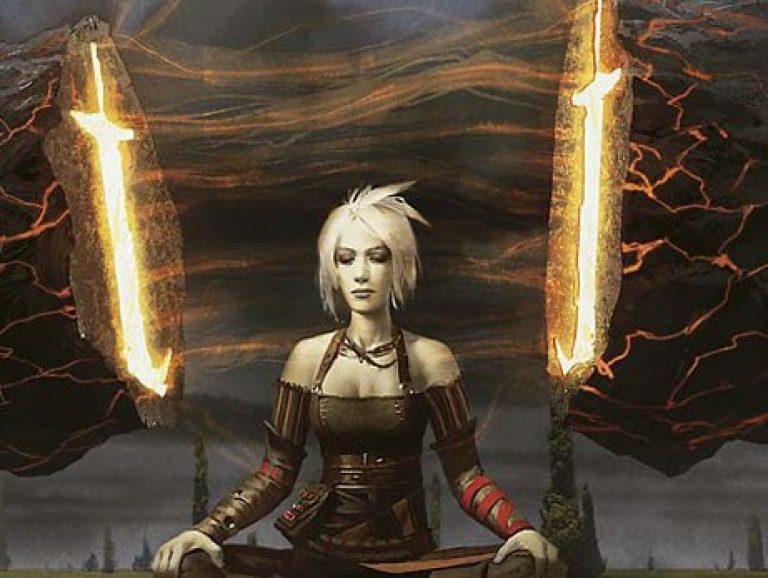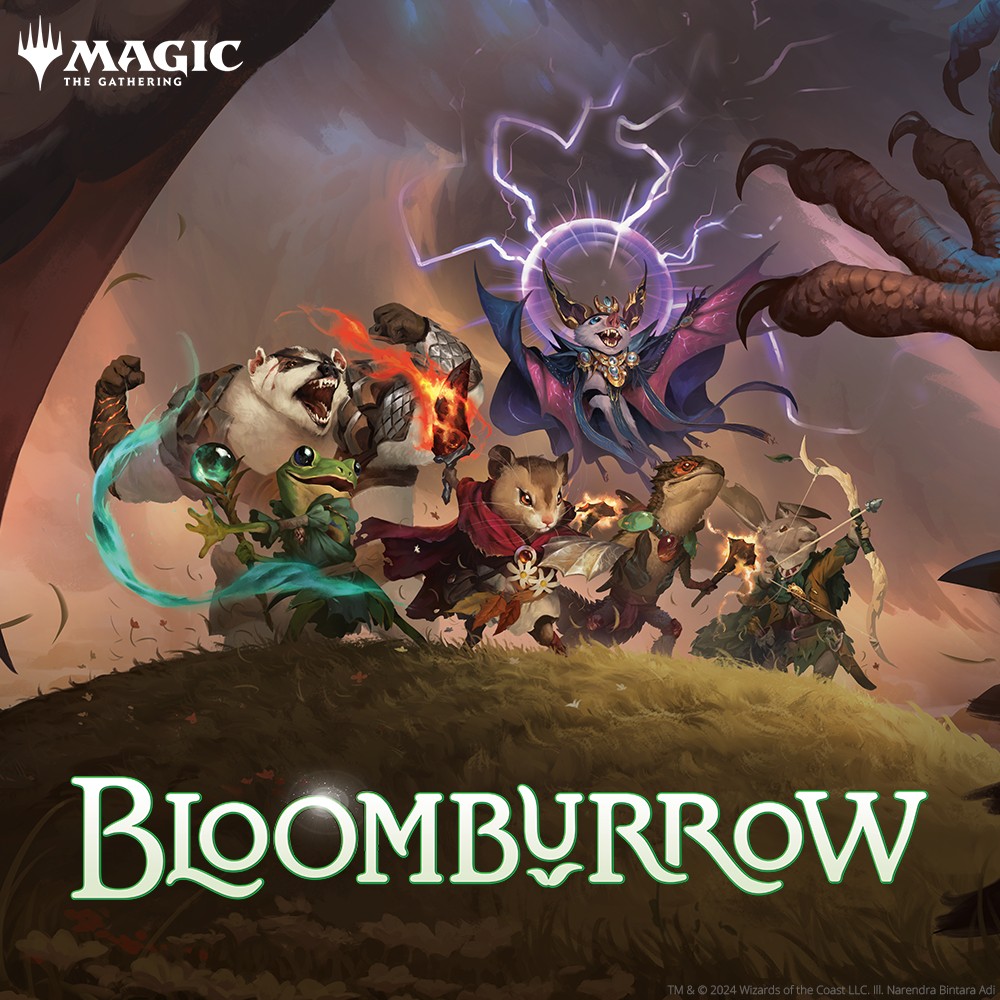Act III Scene II A gaming room in Ottawa.
Enter UW Stoneblade and Aluren.
Aluren: Now cracks an Abrupt Decay.
Good night, sweet Stoneforge Mystic,
And flights of Baleful Strix send thee to
thy demise!
Why does the BUG come hither?
Over the years, I've played a wide variety of decks in Legacy. I rarely settle on a single deck for very long, with the exceptions of Miracles and Merfolk, the prime reason being that Wizards of the Coast keeps printing great cards that create and enhance a variety of strategies. Walking Ballista is a prime example of this. In Legacy, it's currently the best win condition for Food Chain, and it has replaced Triskelion in Vintage workshop decks. With all these great new tools for decks, how can I stay with just one?
Before moving on though, how about some deep thoughts on the UW Stoneblade by yours truly? Sorry, Jack Handey wasn't available.
UW Stoneblade has a lot of strengths, but also several weaknesses. One weakness is that every card trades one for one. In my three tournaments with the deck, I had some games where the cards lined up great against an opponent. Other games, I fell behind and couldn't catch up. What a tragedy!
This is because I drew the wrong cards at the wrong time, or worse, played against a deck full of two for ones. Two for ones are generally cards that come with built-in card advantage. Examples of these are Shardless Agent, Baleful Strix, and Maelstrom Pulse. They tend to get more than one card out of the deal. If those decks also include combo elements, it just feels like you can't tap out because a Food Chain or Aluren would be the followup. Let's evaluate the card choices and see what we can change!
In my previous article, I mentioned the rock solid mana base. The high number of basics is reminiscent of Miracles. However, UW Stoneblade has one advantage over Miracles, which is playing four copies of Wasteland. It gives a different avenue of attack against big mana decks like 12-Post and Eldrazi, while also being able to destroy a Thespian's Stage in the midst of copying a Dark Depths.
The control suite of Force of Will, Counterspell, and Flusterstorm number nine in total. Seven unconditional counterspells in Force of Will and Counterspell are great. While many Legacy decks contain at least that many control pieces, they contain more conditional counterspells. The two conditional counterspells in this deck are Flusterstorm.
Flusterstorm is included primarily due to the banning of Sensei's Divining Top. Many people expected combo decks like ANT and TES to explode in popularity post-ban. This counterspell with the keyword of Storm itself can be devastating to a deck utilizing Tendrils of Agony as a win condition. However, while combo has become a little more popular, it doesn't appear to be omnipresent. In the future, I'd be inclined to move at least one to the sideboard.
The creatures in the deck are all excellent. Snapcaster Mage is a great value card, frequently able to flash back spells like Swords to Plowshares, Brainstorm, and even Council's Judgment late in the game. True-name Nemesis is known affectionately as the blue Progenitus. With protection from everything, there are only a few specific cards that can answer it. Last and not least, there's the namesake of the deck itself:
Stoneforge Mystic was printed eight years ago, and has quickly formed the backbone of several decks. In Legacy alone, Stoneforge Mystic has been paired with cards from every colour to form Blade decks, and became a mainstay in Death and Taxes as well. With its ability to search out a Batterskull or Umezawa's Jitte from your library, it acts as a cantrip as well as a creature.
On the removal in the deck, Swords to Plowshares is first rate. It removes any creature that you can target for one white mana. And for any creature or permanent you can't target, Council's Judgment will do the job for you. Generally, I like one copy, but two? Not so much.
As mentioned previously, one of the issues I've encountered is that almost every card in the deck is a one for one trade. If you start to fall behind, there's rarely a way to catch back up. One card that I'd recommend to help with that would be:
People like to call it the uncounterable Wrath of God. Close enough to accurate, it destroys creatures rather than buries them. It's a nice option in colour to bail you out when you fall behind on the board.
The last remaining cards to discuss are some of the very important blue cards. Brainstorm is the reason I play Legacy in the first place, and there are no options but to play four. Jace, the Mind Sculptor is obviously one of the most powerful cards in the deck, but is a mid-game play. One issue I found during tournament play with UW Stoneblade is the lack of early plays. I pondered the issue for a short time before deciding on the following card:
Adding some number of Ponders would give better card selection, help find specific cards, and allow for a shuffle if there aren't any cards you want in the top three. The potency of Snapcaster Mage would improve by adding more one drops. The addition of several copies of Ponder to the deck allows us to cut a land due to the general rule of adding two cantrips for one land. With the shuffle effect built into Ponder, the most obvious choice is one of the eleven fetchlands. I'd cut an Arid Mesa.
If I were to play this deck tomorrow, these are the changes I'd make:
UW Stoneblade is a very configurable deck without adding a third colour. If any readers take this deck for a spin, let me know in the comments how it goes and what you liked or didn't like.
As for me, I’m going to borrow a line from William Shakespeare’s The Tragedy of Hamlet, Prince of Denmark, of which I shamelessly parodied to start this article. To UW Stoneblade I say, “Good night, sweet prince”. A different deck beckons me, filled with sweet cards, to take on the local metagame.
Until next time, may all your brainstorms be great! (And quick!)




